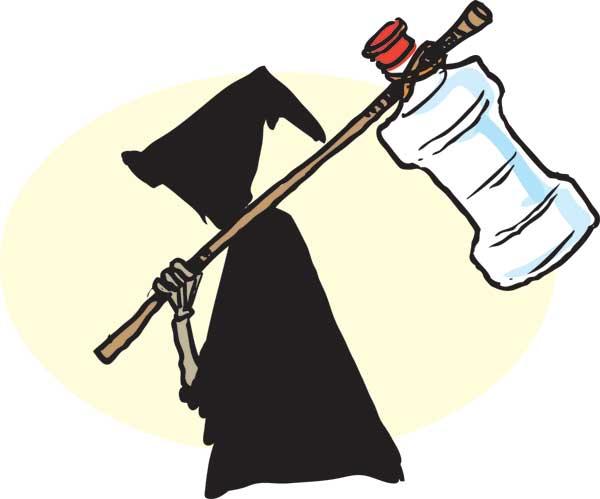10 Mar 2020 - {{hitsCtrl.values.hits}}
An official attached to the Maskeliya Pradeshiya Sabha who is in charge of environmental issues had said on Sunday that the employees of the Pradeshiya Sabha and the armed forces  had collected 1.5 million plastic bottles that had been dumped along the path to the peak of Sri Pada by the pilgrims who had visited the sacred mountain in the past three months.
had collected 1.5 million plastic bottles that had been dumped along the path to the peak of Sri Pada by the pilgrims who had visited the sacred mountain in the past three months.
Sadly, this has occurred despite numerous calls by the police and other relevant officials repeatedly requesting pilgrims not to dump their plastic and polythene wastes in the environs of Sri Pada while there being polythene and plastic collection centres at Nallathanniya, at the foot of the mountain.
Can this be attributed to the ignorance of the pilgrims on the hazards of the polythene and plastic waste? No, this is sheer irresponsibility on their part. They see only one or two plastic bottles when they throw the bottle they carry with them, but now the whole world can see what a massive number of bottles they have added to the environment over a short period.
People dump polythene and plastic not only along the path to the peak of Sri Pada. Still, a majority of people in Sri Lanka have not learnt to dispose of their plastic bottles and sili-sili bags in a proper manner or bring them home to hand them over to the garbage truck of the respective local authority. We can see millions of plastic bottles and polythene bags along the beaches, on river banks and roadsides across the country.
In spite of the country having seen disasters such as the collapse of the Meethotamulla garbage dump which destroyed more than 140 houses killing around 30 people on the Sinhala and Hindu New Year Day in 2017, people in the country have not changed their habits. They simply throw away these items after use, and there is no mechanism with the authorities either to persuade the people to dispose them in an environment-friendly manner.
In fact, the lethargic attitude of the local authorities in collecting garbage has also contributed the people’s attitude towards the environment. Many local government bodies that are tasked to collect garbage do not do their job properly and regularly, compelling the people to dump their waste somewhere out of their premises.
Use of polythene is increasing day by day, and now it can be seen that polythene is being used in almost every activity of life. On the other hand, plastic use and disposal is especially a challenge in countries such as Sri Lanka where garbage collection and recycling services are often inadequate.
It is a well-known fact by now that plastic and polythene are harmful to wildlife as well as humans. Plastic bags can choke or poison fish, animals and birds, with marine wildlife particularly vulnerable. Plastic pollution can afflict our land, waterways and seas. Living organisms, particularly marine animals, can be harmed by problems related to ingestion of plastic waste, or through exposure to chemicals within plastics. Researches have proven that humans are also affected by plastic pollution, such as through disruption of various hormonal mechanisms. Some chemicals used in plastic production can cause skin diseases as well.
We have read hundreds of newspaper articles and television features on these issues so far. It would be utterly false to say that an adult is not cognizant of the harmful effects of dumping these items haphazardly.
We have a plethora of organisations concerned about environmental issues, mainly on forest cover. They seem to pay little or no attention to the garbage issues. They along with the government should take effective measures to create awareness of plastic and polythene pollution among people, until they, in turn, teach their children about this important matter.
26 Apr 2024 1 hours ago
26 Apr 2024 3 hours ago
26 Apr 2024 4 hours ago
26 Apr 2024 5 hours ago
26 Apr 2024 5 hours ago